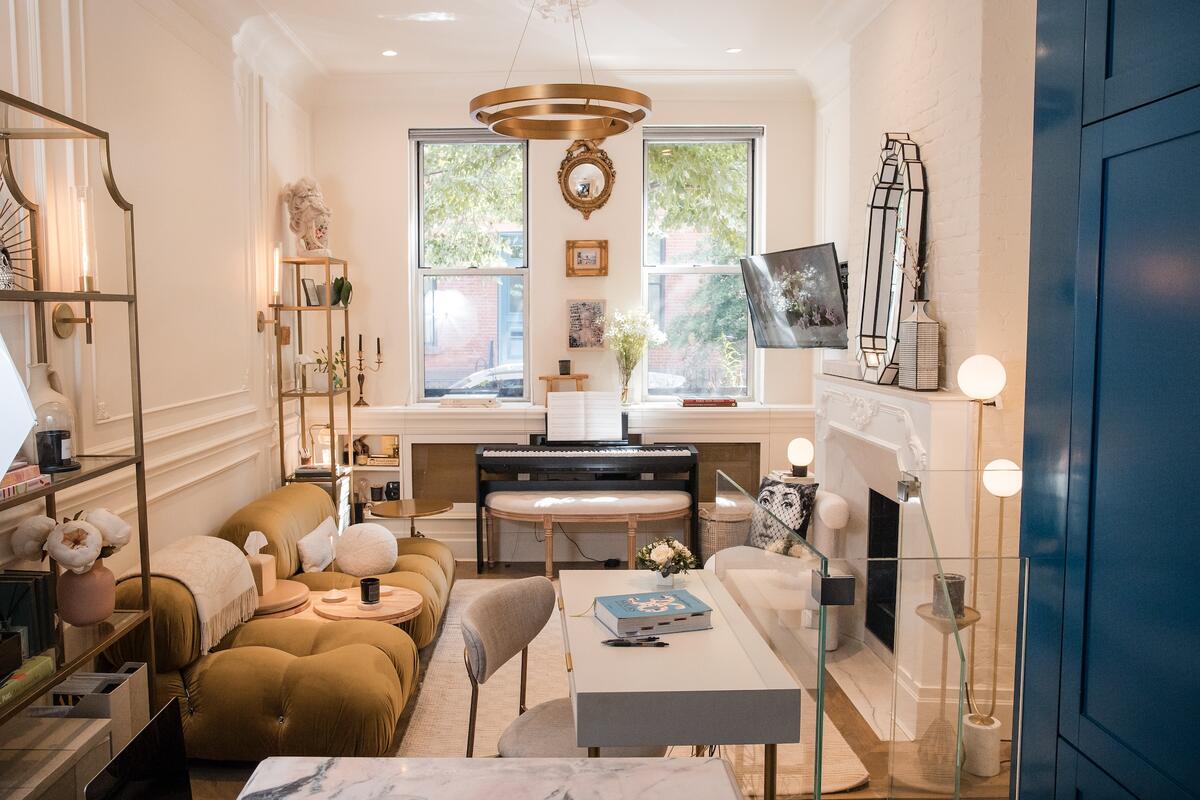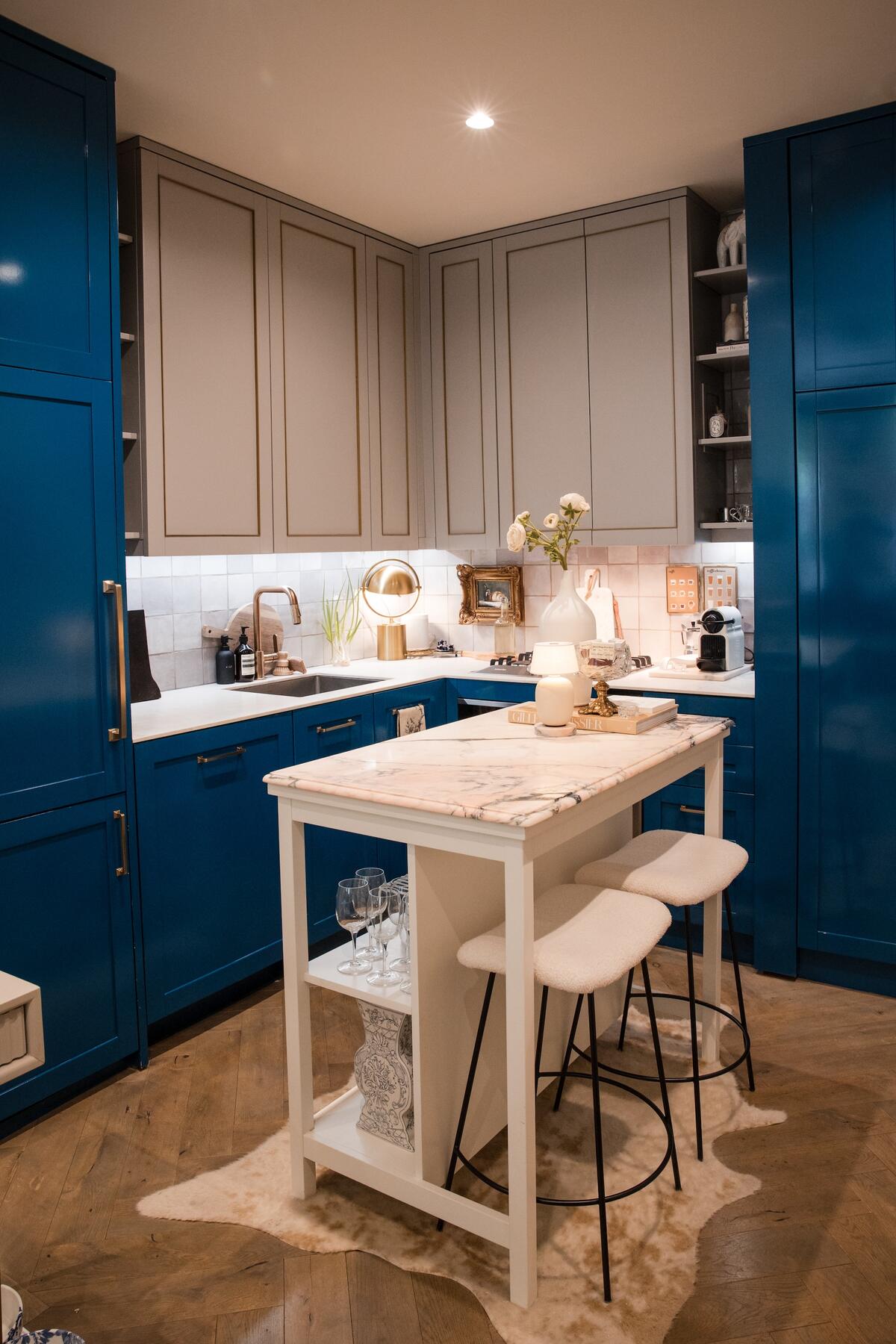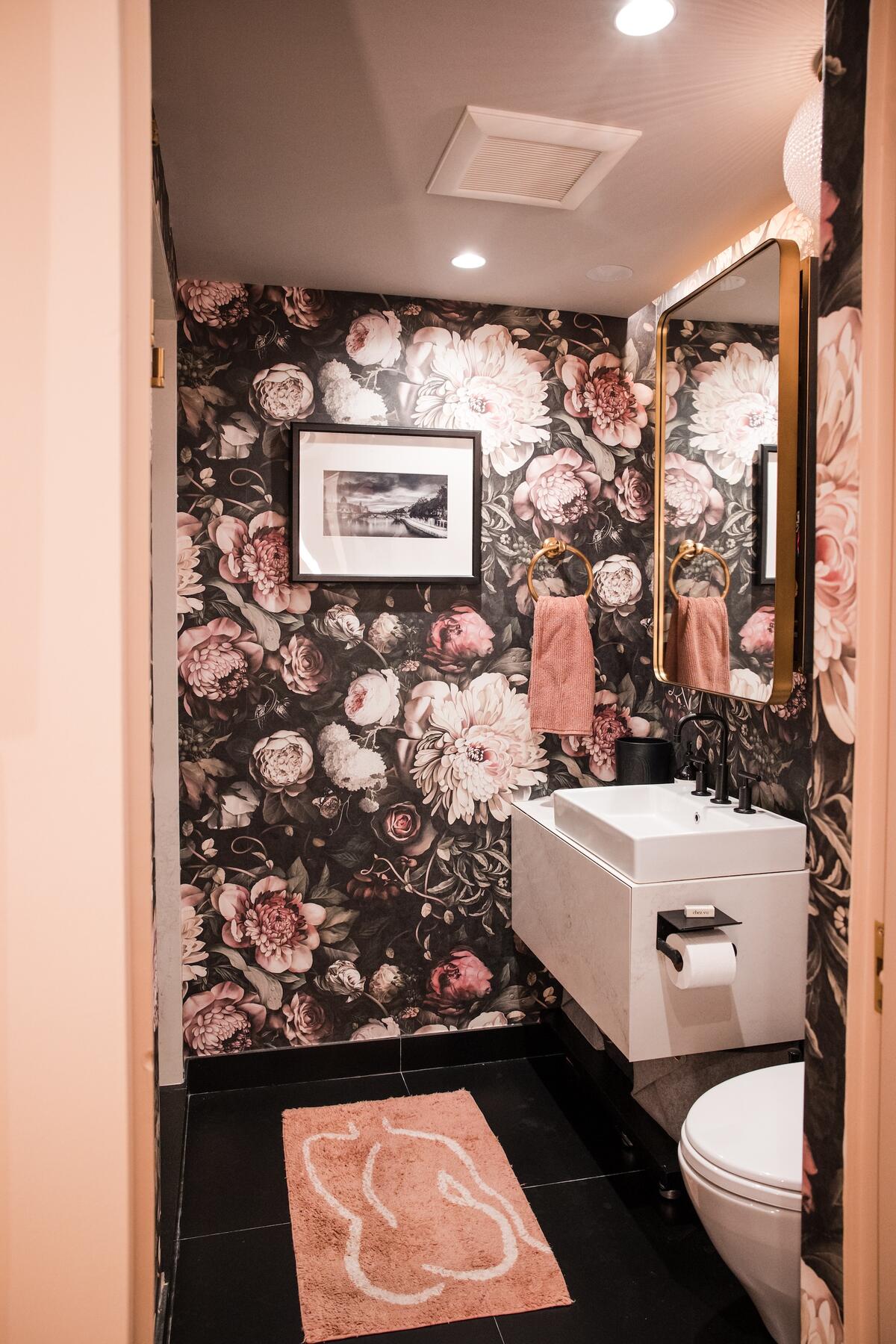In Ask an Influencer, Business of Home explores the creator economy. This week, we spoke with content creator Michelle Trinh (@chezvudecor).
During the early days of the pandemic lockdown, Michelle Trinh found herself frustratingly on-trend: She was suddenly dissatisfied with her home. She had purchased a West Village apartment in 2019, and swiftly embarked on a renovation. But when she was soon stuck indoors, she could see that it was all wrong—the color scheme, the decorations, the furnishings. What she really wanted, she realized, was a taste of Paris.
Thanks to a career in the beauty industry, she knew exactly what that felt like—she had lived in the City of Light for four years while working for L’Oréal. Though Trinh had since settled down in New York, where she managed her own branding and marketing consultancy, she was eager to bring a bit of old-world European charm to her 700-square-foot digs, and to document the endeavor on social media.
“People don’t usually invest in high-quality materials or pieces in such a small footprint,” says Trinh. “I wanted to show that no matter how big or small your place is, you can invest in the updates that you want to make, as well as the pieces that you put into it.”

The concept resonated with social media users, and her following steadily grew until one video in particular—a narrated tour of her apartment—gained a whopping 991,800 views on TikTok, prompting her platform to take off. Today, her audience numbers 38,400 followers on Instagram and 27,000 on TikTok.
Ahead, Trinh shares the content strategy that allowed her to turn a viral moment into a loyal following; how to use precise messaging in your content to reach potential clients; and her three-second rule for instantly improving engagement.
Save The Silver Bullet
When Trinh first started posting content about her apartment, she knew it wasn’t necessarily going to appeal to a wider audience—at least not yet. If anything had a chance of going viral, it was likely to be a video that depicted a home tour of her entire space (a reliable crowd-pleaser in the online design world), which she finally posted after she had plenty of content that homed in on smaller tips and details of her home.
“Luckily, that video [home tour] did go viral,” says Trinh. “But I saved my silver bullet for when I had enough content that people could really dive into who I was, my background, and could see more details of my space.”
The strategy took the pressure off of her to feverishly continue posting in order to feed her new followers after that viral moment—they had plenty of older posts to explore. It also gave her a chance to experiment with different types of content as she was building her account without the pressures of a huge audience. By the time she took off on social media, she had already found her voice.

“What I realized was that I love short tidbits of information—giving one tip in one video—and speaking to the camera, explaining the background and decision-making within the design,” she says. “I found the type of videos that were not daunting for me to do. Of course there are all of these highly produced, beautiful videos that are out there, but I was like, ‘I don’t have that skill set, so what is easier for me to create?’ [That way, I could] motivate myself to post more often, because it didn’t feel like a huge stress to create these videos in itself.”
Plus, by the time Trinh’s house tour went viral, the time she had freed up by building up an existing library of content could be used to strategically further her reach outside of social media. She acted quickly to leverage the video’s success into a number of media opportunities and partnerships—a write-up on Apartment Therapy, YouTube tours on Listed and Homeworthy, and a brand collaboration with StreetEasy—that introduced her to an even wider audience.
Use messaging to conjure clients
In her marketing and branding work, Trinh has noticed a common pitfall among early-stage ventures struggling to find their footing: “A lot of times what I see with [anyone] trying to build their social network is that they want to be everything for everyone,” she says. “I usually tell them, ‘That means you’re nothing to anyone.’”
On platforms like Instagram and TikTok, she says, your posts should be paired with messaging tailored to your ideal audience—otherwise, your content could rack up thousands of views but still fail to convert into design clients. “Being too broad can be a crux,” she explains. Specificity is actually your friend: Because platforms like TikTok are already good at serving relevant (and often hyperspecific) content to its users, content creators can use that to their advantage. Trinh recommends using specific phrases in your videos and post captions that signal your design style, location and ideal clients. “You have to make the algorithm work for you,” she adds.
“I think people underestimate the basics of saying what you want—like, ‘Most of my clients are people who are working in finance and looking for gut renovations of their brownstones in Greenpoint,’” she says. “You literally just handed Instagram the keywords that you want to find in your audience. Being very intentional about the content itself and the words that you say in your videos is really helpful with finding the right audience on these channels.”

The three-second rule for engagement
“My rule is that you have to do three things in the first three seconds,” says Trinh. “Say what you’re going to talk about, show what you’re going to talk about, and spell out what you’re going to talk about.”
In practice, she says, that might look like a voice-over explaining, “Today, I’m going to show you my five design tips for the kitchen,” and in the meantime, the video captures the space in question. The third point comes into play in the caption of the post, where you’ll spell out exactly what your tips are, and how they break down.
“People will drop off in the first three seconds if they aren’t engaged already,” says Trinh. “This way, you’re reinforcing in three different ways the expectation for the rest of your video.”
Her other go-to tactic for improved engagement is simple: posting on a regular basis—even if they’re low-lift posts. She cites statistics from Instagram that say creators with the greatest net follower growth post 10 Reels or more a month, or roughly two to three videos per week.
“Every single video doesn’t have to be this enormous tour or educational thing,” she says. “It can be a snippet, even a five-second video with trending audio, but showing up consistently helps the algorithm to continue pushing your content out.”





























